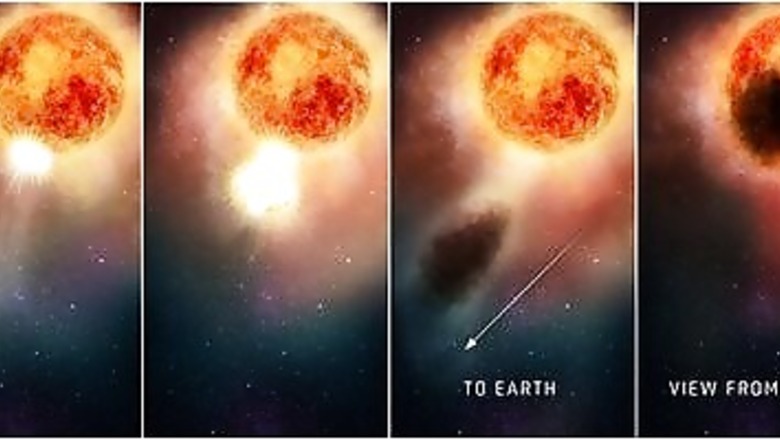
views
WASHINGTON Astronomers have determined the cause of the dramatic dimming observed last year and earlier this year of one of the brightest stars in the night sky, a colossus called Betelgeuse that appears to be on its way toward a violent death.
Based on Hubble Space Telescope observations, scientists said they believe Betelgeuse ejected a huge hot, dense cloud of material into space that cooled to form dust, shielding the star’s light and making it appear dimmer from the perspective of viewers on Earth.
Betelgeuse is classified as a red supergiant, the largest type of star. It is more than 10 times the mass of our sun. If it resided at the center of our solar system, its surface would extend to the planet Jupiter.
Scientists suspect Betelgeuse – pronounced “beetle juice” – is nearing the end of its life cycle when it will use up its nuclear fuel and explode, relatively soon in cosmic terms, in an event known as a supernova.
“Frankly, we don’t know for sure how soon Betelgeuse will go supernova,” astrophysicist Andrea Dupree, director of the Solar Stellar Planetary Sciences Division at the Harvard-Smithsonian Center for Astrophysics and leader of the research published this week in the Astrophysical Journal, said on Friday.
“It is likely not in our lifetimes. But, we do not know how a star behaves the week before, the night before it explodes,” Dupree added.
In a supernova, huge stars like Betelgeuse expel large amounts of heavy elements, including carbon, oxygen, calcium and iron, into space that become building blocks of new generations of stars.
Betelgeuse is located relatively near our solar system, about 725 light-years away. A light year is the distance light travels in a year, 5.9 trillion miles (9.5 trillion km).
Its dimming began last October and by mid-February had lost more than two-thirds of its brilliance. It returned to its usual brilliance by April but may be dimming again, which researchers are working to confirm.
Disclaimer: This post has been auto-published from an agency feed without any modifications to the text and has not been reviewed by an editor



















Comments
0 comment